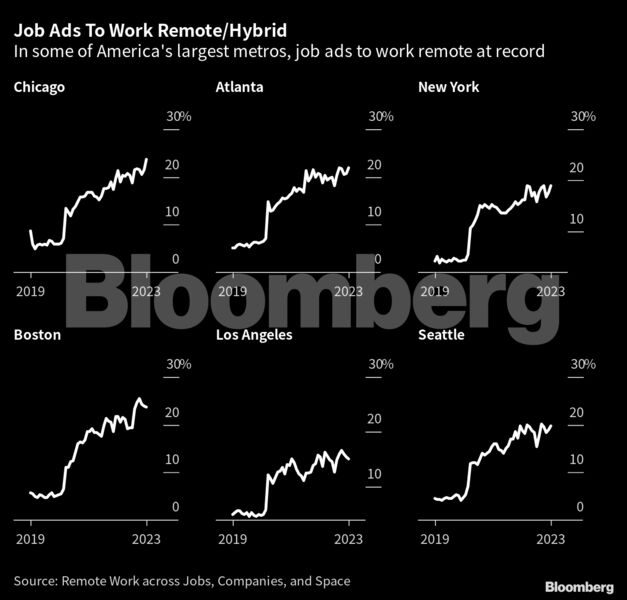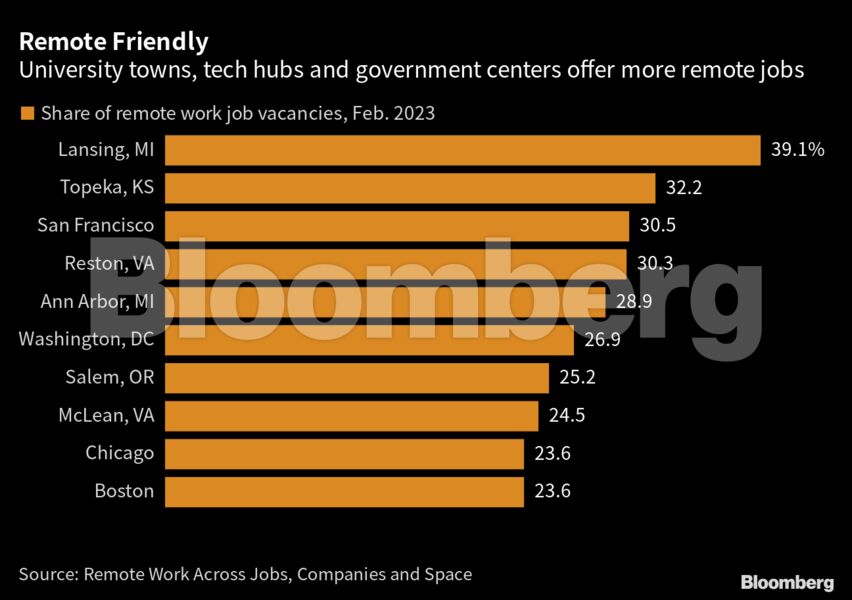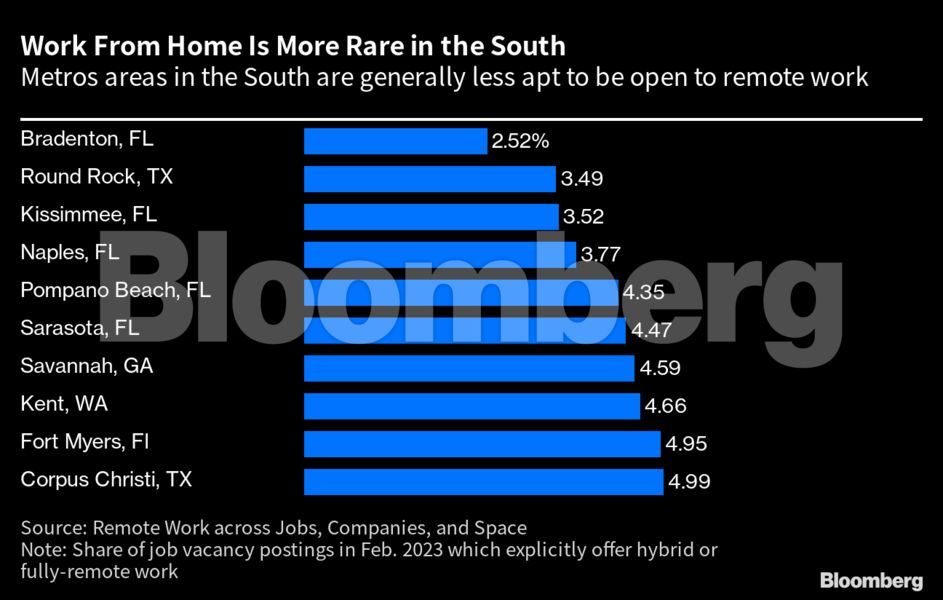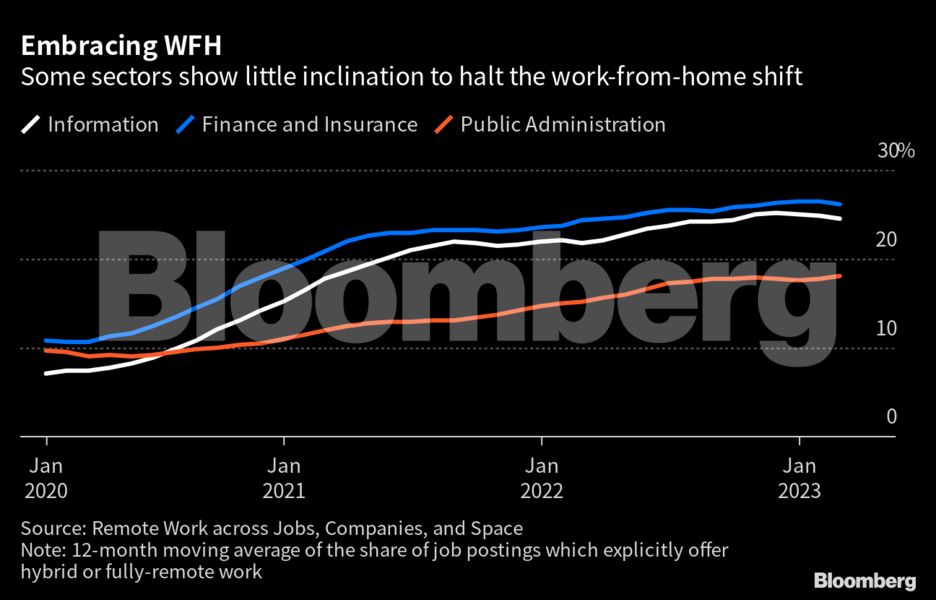(Bloomberg) -- The shift to remote work is gaining momentum in some of America’s largest metro areas, despite increasing pressure from corporate chiefs for employees to return to the office, according to new data from an international team of economists.
In some major US cities, the number of job postings for remote-friendly roles is hitting record levels — and trending up. That’s the latest finding of researchers including Stanford University’s Nicholas Bloom who’ve been gathering data on remote work since the early days of the pandemic.
By measuring the prevalence of job ads that offer flexible arrangements, they found that in places like New York, Chicago and Atlanta, more postings are open to remote workers than at any time in the past three years.

That could mean bosses like JPMorgan Chase & Co.’s Jamie Dimon, who said working from home “doesn’t work” for younger staff or managers, face an uphill fight. As the work-from-home debate reverberates across the country, mayors have also pushed for employees to get back to the office, which would help shore up the tax base for municipal governments.
But the latest data suggests that partially empty office towers — a feature of city-centers with the rise of remote work — may remain that way. Data from security firm Kastle Systems show that office occupancy in major US cities is only about half of the pre-Covid level.
That may turn out to be a problem that goes beyond the bosses trying to repopulate their offices. Some investors worry that this month’s bout of banking turmoil could cause trouble for commercial real estate owners who need to roll over their debt, as interest rates soar while property values have slumped partly because workers are staying home.
Sorting the job-openings data by cities show that Lansing, Michigan has the highest share of remote job postings, at 39%. The biggest employers there are the state government and Michigan State University. Municipal governments and universities tend to have a more unionized labor force, which means unions may have to sign off on any return-to-office deal.

“Those cities with a greater white-collar workforce, especially in government, tech and education, have the highest share of new jobs offering remote and hybrid arrangements,” says Peter Lambert, a doctorate candidate at the London School of Economics and member of the research team.
The South is generally the worst part of the US to be an aspiring remote worker — and the worst place of all is Bradenton, near Tampa in Florida, where less than 3% of jobs posted have that option. Nine of the 10 metro areas with the lowest share of job ads open to remote or hybrid work are in the South.

The pandemic created new opportunities for employees to enjoy more flexible arrangements, but that hasn’t been shared equally across the economy. In some industries, the reality is that people need to be where the work is.
Very few jobs in transportation, food preparation and serving, and health-care support are feasible to do remotely. In other sectors such as finance, remote work continues to grow. The shift could upend the notion of “company towns,” or dominance of a particular industry by a particular region. Some analysts even see that kind of process at work in the current shift of many finance jobs out of New York City.

Still, many firms are seeking to put limits on remote work, with policies that mandate how often employees need to be in the office. And if the labor market cools down, as economists expect it to do over the coming year, then bosses will have more leverage — and employees will have less.
That might be happening in some corners of the economy already — like parts of the technology industry, which has seen large-scale layoffs. In San Jose, for example — an area with a high concentration of tech workers — the share of ads at least partially open to remote work has fallen from a peak of 20% in December to 15% last month.
© 2023 Bloomberg L.P.





